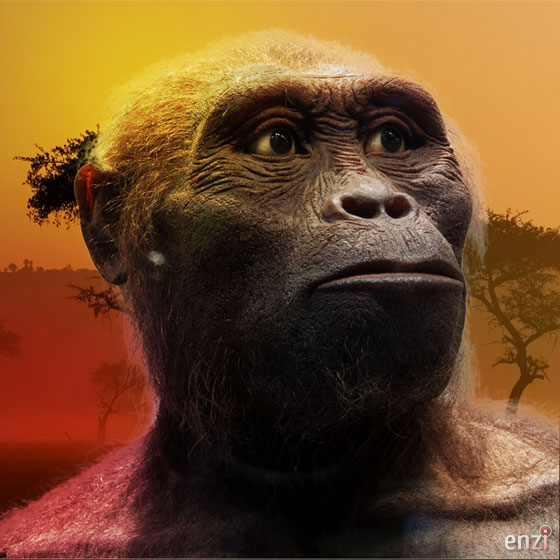Australopithecus Afarensis

Australopithecus afarensis
Living between 3.85 and 2.95 million years ago in Eastern Africa (Ethiopia, Kenya, Tanzania), Australopithecus afarensis is one of the longest-lived and best-known early human species. Remains of more than 300 individuals have been unearthed! The species survived for over 900,000 years (more than 4 times longer than homo sapiens has been around).
It is best known by the fossil nicknamed Lucy from the sites of Hadar, Ethiopia, the Dikika ‘child’ skeleton fossil, also from Ethiopia and as well as the Laetoli (Northern Tanzania) fossils where the oldest documented bipedal (upright walking) footprint trails were also found.
Similar to chimpanzees, Au. afarensis children grew rapidly after birth and reached adulthood earlier than modern humans. This meant Au. afarensis had a shorter period of growing compared to what modern humans have today, leaving them less time to get parental guidance and socializing during childhood.
Au. afarensis had ape-like face proportions (a flat nose, a strongly projecting lower jaw) and braincase (with a small brain, usually less than 500 cubic centimeters — about 1/3 the size of a modern human brain), and long, strong arms with curved fingers adapted for climbing trees. They also had small canine teeth like all other early humans, and a body that stood on two legs and regularly walked upright. Their adaptations for living both in the trees and on the ground helped them survive for almost a million years as climate and environments changed.
Australopithecus afarensis fossils were found as early as 1930 but the genus was formally named in 1978.
The male of the species averaged 4 ft 11 inches (151 cm) and weighed in at 92 lbs (42 kgs). The females average 3 ft 5 inches (105 cm) and weighed 64 lbs (29 kgs). The footprint trail they left at Laetoli is 27 m (88 ft) long and the impressions of about 70 individuals have been counted.
Analysis of their teeth suggest they ate soft, sugar-rich fruits as well as hard, brittle foods – likely when fruits were not available.
